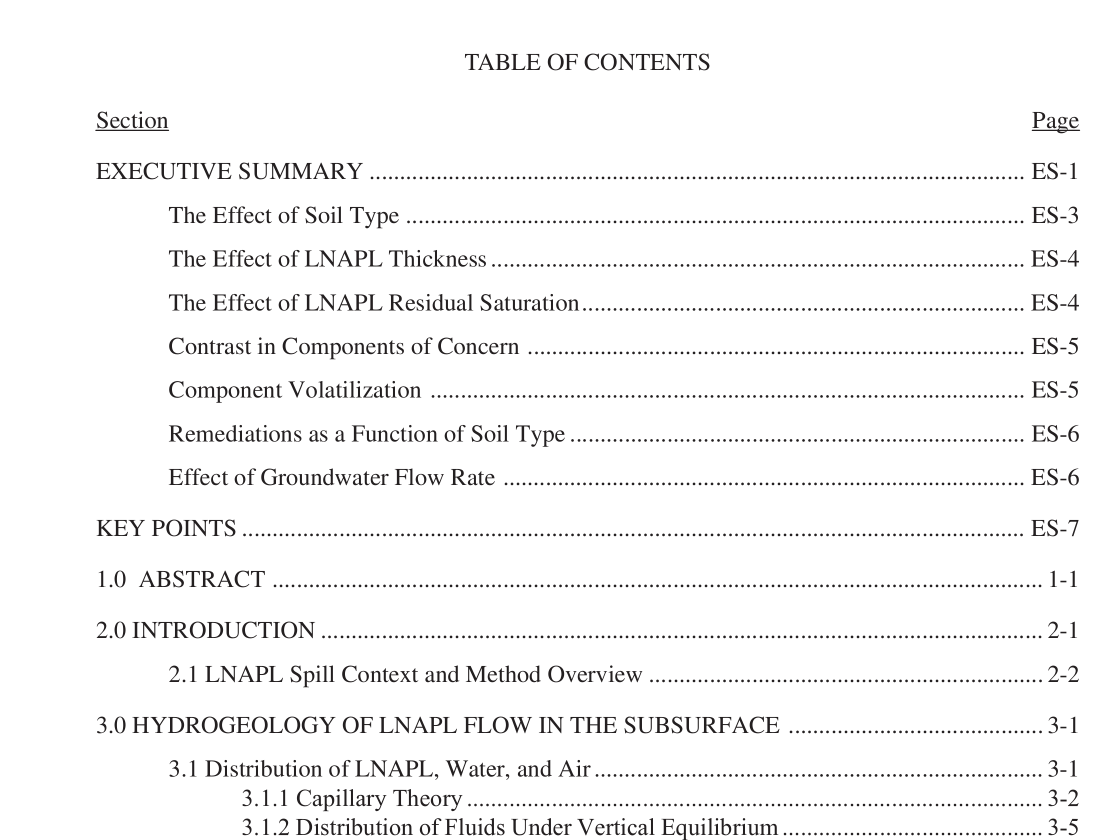API Publ 4715 pdf download

API Publ 4715 pdf download.Evaluating Hydrocarbon Removal from Source Zones and its Effect on Dissolved Plume Longevity and Magnitude
When LNAPL distribution and cleanup are linked to chemistry, the hydraulic recovery limitations can be placed in a risk-benefit context. The linked physical and chemical calculations show why, under many conditions, hydraulic recovery of LNAPL may have little or no benefit in reducing the magnitude or longevity of the risk downgradient from the LNAPL source area. The technical evalua- tions also show that chemical alteration of the LNAPL source may achieve compound specific cleanup goals that cannot be reached through hydraulic methods. For any remediation strategy, the short and long term benefits can be evaluated against the cost, time, and probability of achieving cleanup targets. The fundamental principles described in this report have been organized into a software utility, called LNAST (LNAPL Dissolution and Transport Screening Tool). This software utility links the series of analytic solutions that predict LNAPL distribution, dissolution, volatilization, and downgradient dissolved-phase concentration through time, both with and without remediation through hydraulic means. Because the assessment described in this report has several linked aspects, or “tools”, for assessing LNAPL impacts, cleanup, and chemical transport, we will refer the combi- nation of the underlying principles, the resulting mathematical solutions, and the software as a “toolkit”.
Because the solutions are analytic, they make many simplifying assumptions. Therefore, the linked suite of physical and chemical calculations will not provide a detailed representation of the site. The calculations described in this report, whether solved in a spreadsheet environment or using the software utility, are designed as screening tools only. The results of the calculations cannot be precisely calibrated to site conditions, just as the results of other screening models cannot. The toolkit described in this report is most properly considered as a quantitative concep- tual model to be used for screening decision-making. There is a deliberate compromise between screening analytic methods versus numerical calculations that can consider a more complete range of complexities. While it is clear that conditions not considered by the software utility, such as complex vertical and lateral variations in soil properties, seasonally varying groundwater elevations, and laterally varying groundwater flow velocities near the LNAPL are important, the parameters necessary for such evaluations are not often available. Further, the effort involved in numerical multiphase, multidimensional modeling is significant. The approach presented here is therefore designed to use available information in the best manner possible, but it should be clear that uncertainty will exist in the results. The recommended use of the toolkit is expected to produce conservative results. If more accurate or detailed assessment is needed, numerical mod- eling and/or advanced data collection will be warranted, consistent with the higher-tiered levels of effort in many risk assessment guidelines (e.g., Risk-Based Corrective Action, ASTM 1995; Risk Assessment Guidance for Superfund, EPA, 1995). Therefore, while simple to use, this screening conceptual evaluation method requires good user judgment and awareness of the limitations.
The presence of multiple phases (water, LNAPL, vapor) in porous material influences the movement and transport of each phase under ambient or remediated conditions. Multiphase fluid mechanics and other principles are used to estimate the pore fluid fractions and their mobility under a variety of conditions. The distribution and composition of the LNAPL then determines the equilibrium chemi- cal partitioning into groundwater and vapor. Ultimately, the application of these principles results in estimates of the time dependent concentration of soluble components partitioning out of the LNAPL and into groundwater, with a link to vapor flux under ambient flow and partitioning conditions. For instance, one could look at chemical partitioning from an LNAPL source that has had no remediation action, or one could consider the same source after some cleanup effort (but not during that effort). This toolkit does not directly consider institutional controls, such as plume containment, that are often an important component of risk management. However, one could use the toolkit to consider the time frame over which an institutional control might be appropriate.









